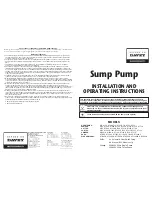
Maintenance
Tighten dosing head bolts
51
© Lutz-Jesco GmbH 2014
Subject to technical changes.
140327
Solenoid-Diaphragm Dosing Pump
MAGDOS LP
Operating Instructions
BA-10231-02-V03
12.2 Tighten dosing head bolts
Tighten the dosing head bolts in diagonally opposite sequence with
a torque wrench.
The necessary torque is 180 Ncm.
12.3 Change the diaphragm
Fig. 12-1: Exploded view of the diaphragm and dosing head
12.3.1 Dismount the old diaphragm
Precondition for action:
You have disconnected the dosing pump from the mains supply.
You have depressurised the hydraulic sections of the plant.
You have rinsed the dosing pump using a safe medium (e.g. water).
Perform the following working steps:
1.
Screw out the four screws
on the dosing head using a suitable
tool (SW 3 Allen key) and take off the dosing head
.
2.
Use pliers to bend the edge of the diaphragm
slightly upwards
and screw it out counter-clockwise.
12.3.2 Install a new diaphragm
Precondition for action:
You have thoroughly cleaned the diaphragm rod
and the
diaphragm flange
so that the new diaphragm is not affected by
dosing medium residues.
You have slightly greased the diaphragm thread
(e.g. using
Molykote Longterm W2).
1.
Screw the diaphragm manually
in the clockwise direction until it
safely contacts into the diaphragm rod.
2.
Bring the dosing head into position and insert the screws. First
tighten the screws finger-tight. After this, tighten the screws in
diagonally opposite sequence, e.g. top left and bottom right and top
tight and bottom left.
Diaphragm change finished.
12.4 Clean suction and discharge valves
Contaminated valves affect the dosing preceision and this means that
you should clean the valves on a regular basis.
With dosing heads made of plastic, when replacing a valve you must
replace the complete dosing head (see „Spare parts“ on page 55).
Replace parts that are subject to
wear (diaphragms, valves, seals,
etc.)
if you detect unacceptable wear
Rinse out and clean the dosing
pump
before changing diaphragms
before decommissioning for
a long period of time
after feeding aggressive,
adhesive, crystallising or
contaminated liquids
Maintenance work to be carried
out
Frequency
Table 12-1: Maintenance information and maintenance intervals
NOTICE
Damage to the dosing head/leakiness of the diaphragm
If you tighten the screws too much, this can lead to the dosing head
being damaged. However, not tightening the screws enough leads
to the diaphragm being leaky and correct functioning being
affected.
Tighten the screws to a torque of 180 Ncm.
It may be necessary to recalibrate the dosing pump after
replacing the diaphragm or other spare parts on it. For more
information, refer to page 41.
i
Содержание MAGDOS LP
Страница 2: ......
Страница 70: ...70 Solenoid Diaphragm Dosing Pump MAGDOS LP Lutz Jesco GmbH 2014 Operating Instructions BA 10231 02 V03 Notes ...
Страница 75: ......
















































